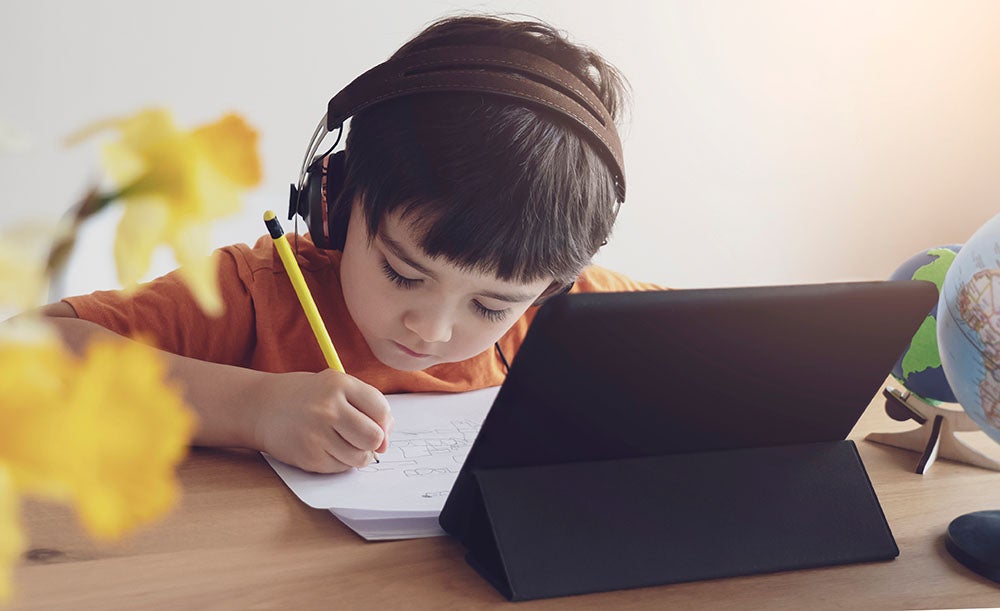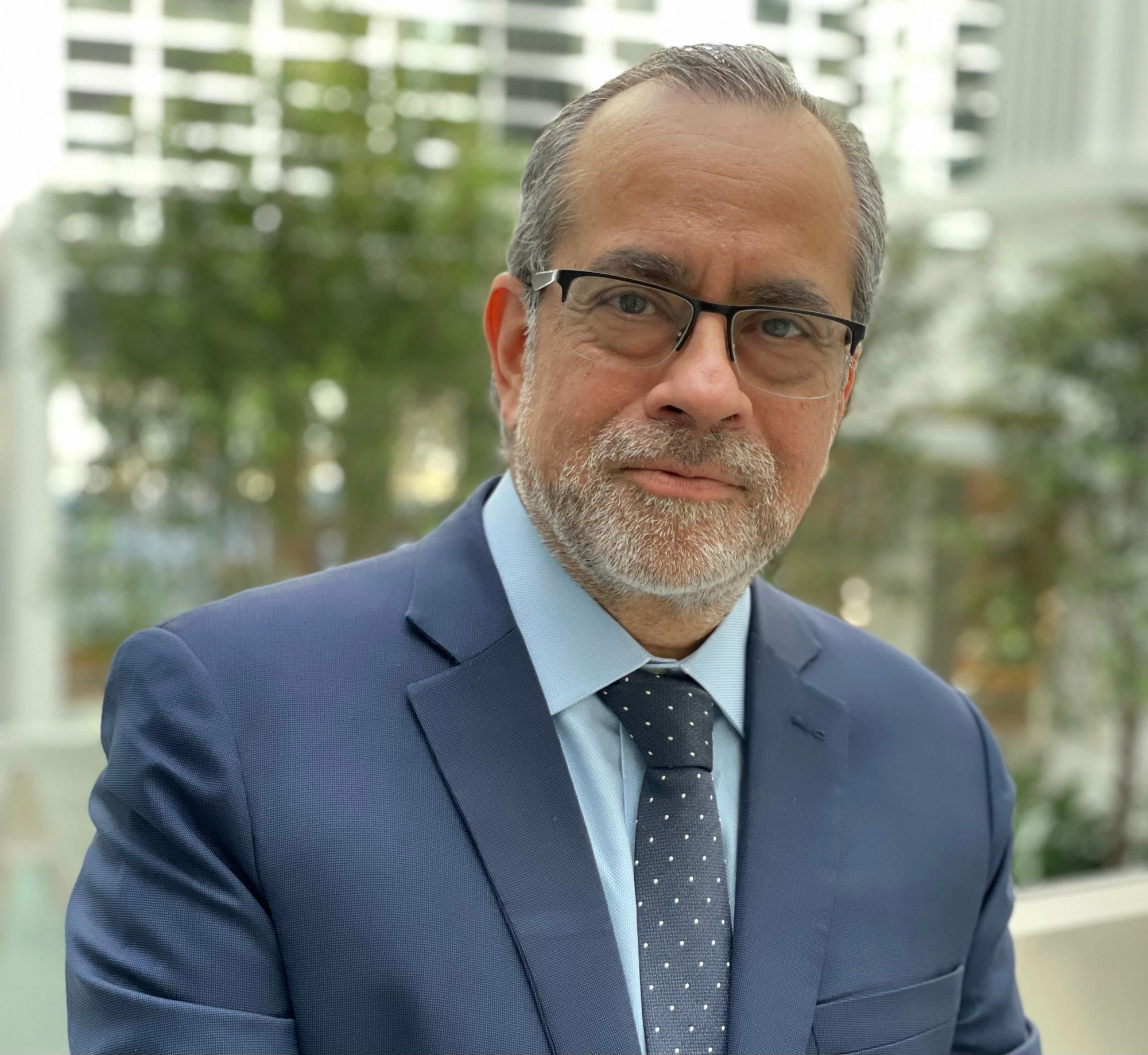 Un niño en sus clases virtuales.
Un niño en sus clases virtuales.
Education is a social experience. Education is reading comprehension and mathematical reasoning. But it is mainly about being a good citizen, about learning empathy, self-control, solidarity, caring about the common good. This learning takes place at school, where the interaction between teacher and student occurs. And it is at school that millions of children have access to nutrition and a protected space to learn and thrive, particularly girls.
That is why the unprecedented and monumental shock of the pandemic changed the teaching-learning process so much. It is an experience that will live forever in the memory of teachers and students. But that experience has been extremely varied. Suddenly, and faster than expected, many teachers became technology experts, connecting digitally with their students and creating alternative learning routines using digital platforms. If their students had internet access, and a space to work at home, they were able to partially compensate for the lack of in person classes. Other teachers, whose students only had access to a smartphone, had greater difficulties. These students could watch educational programming on television, but with several siblings in a small house and little room to concentrate, they couldn't learn. And many other students completely disengaged from the educational process.
In many middle-income countries, mainly in the southern hemisphere, this experience, so heterogeneous and highly dependent on the household, has also been extremely extended. In most of Latin America, in India, and in the Philippines, classes have been interrupted for 8 or 9 months. It is not surprising then that UNICEF and the World Bank estimates show that 10 million students may not return to classrooms, and even up to 24 million if we also count tertiary level. We already knew that before the pandemic a lot of children and youth at school were not learning enough. We already had a learning crisis that now is deeper. Now the urgency is much greater. There is a loss of learning, which is also immensely uneven.
2021 is not going to be a normal year in schools anywhere in the world. But it has to be a better year than 2020. It has to be a year of accelerated recovery. Unfortunately, there is great uncertainty about the evolution of the pandemic and the speed at which we will see mass vaccinations. It is impossible then to wait for the health risk to be eliminated to resume learning for all. There is no quick return to the school routine that we knew about in the short- to medium-term. That’s why the question isn’t just when to go back to school, but it’s how to get back to learning.
By 2021, each country will make decisions balancing the health risk – which varies spatially and temporally– with the need to minimize immense learning losses.
Discussion should focus on returning to learning now. At times, sanitary conditions during this pandemic will force near-complete confinement, and remote learning – strengthening platforms via the internet, TV, radio, social media and material distribution – will remain essential. But as soon as there is potential for opening, schools must be a priority, perhaps only after health and food distribution establishments. The most likely option will be pragmatic schemes of blended learning, combining partial school attendance (a few days a week, with reduced school days, with social distance, with security protocols, avoiding the physical presence of older teachers, etc.) with remote learning through all platforms imaginable. Some level of interaction, while voluntary, can have a very important impact as remote learning can be more effective if there is already a bond between teacher and student.
But educational communities must be prepared to close, partially close, and then reopen according to the prevalence of coronavirus transmission, as is already being experienced in many countries that have gone through a second wave of the virus. Managing this flexibility will require a lot of social cohesion and joint work between schools, parents, and educational authorities.
This juncture requires very good school management. Here are 10 areas in which decisions must be made in a comprehensive way or in which to invest in an extraordinary way:
• Provide tools to assess students’ learning, so that the teacher and principal know what level each student is at.
• Invest in water and sanitation infrastructure, equipment, and health protection protocols.
• Adopt a flexible curriculum that prioritizes fundamental and socio-emotional learning.
• Adopt a flexible school year and school day, across time and regions of a country.
• Support teachers comprehensively: on digital skills, on remote and blended teaching, on their mental health, and in their general well-being.
• Implement aggressive models of remedial education, tutoring, or additional hours.
• Improve learning conditions at home, distributing reading material, electronic devices, and negotiating zero-rates for internet connection to educational sites.
• Strengthen blended models of remote education (Radio, TV, internet) with in-person interactive classes to the extent that sanitary conditions allow.
• Set up aggressive campaigns to keep the students’ connection with the school and eliminate school dropout.
• Establish mechanism to support parents in their role in helping in their children’s learning process.
Many of these urgent investments are also critical for building forward better and building more equitable and efficient education systems. Before the pandemic, we already had a serious Learning Crisis. Education systems were improving very slowly – we cannot return to that the trajectory. It’s time for a turning point. This phenomenal crisis is an opportunity to ensure than schools are centered on learning and in the breadth of skills children need. An opportunity to close the digital divide. To reform teacher’s training. To use technology to make teacher-student interaction more effective. For parents to be protagonists of the education and the future of their children. To improve learning conditions at home, particularly in the most vulnerable households.
Educating a child is a complex challenge. Even more so today. But on International Day of Education we must remember that it is a human right. We must work on these two immense challenges. First, going back to learning, and, as soon as feasible, urgently, to school. Because each lost day is a day difficult to recover. And too many days have been lost already. And, second, use the window of opportunity that this crisis gives us to build more effective and just education systems.


Join the Conversation